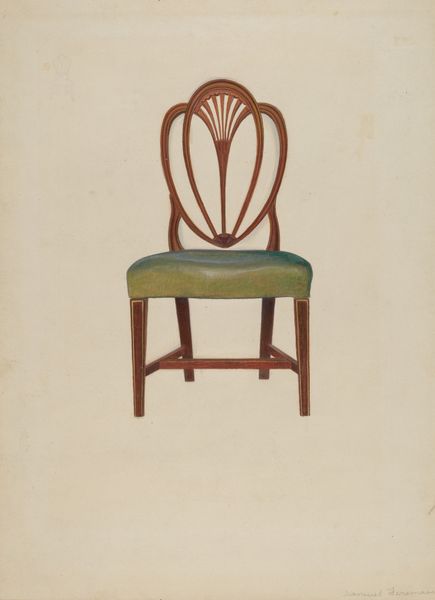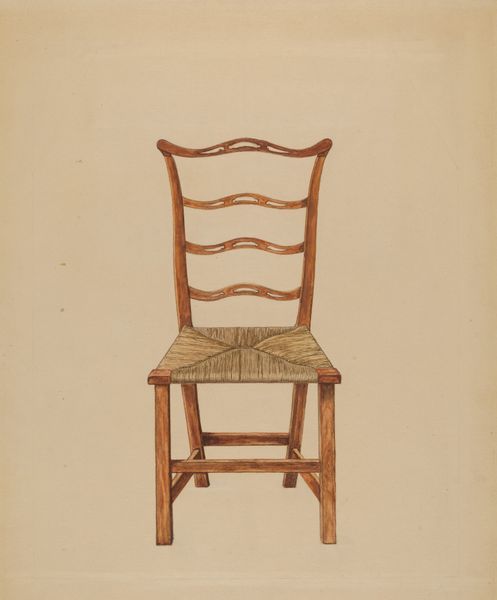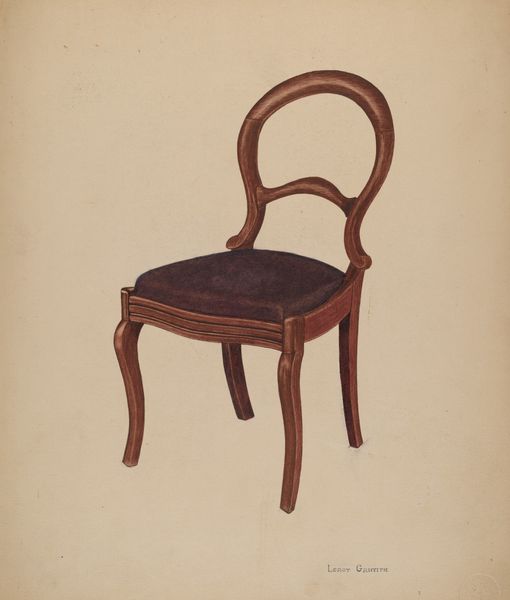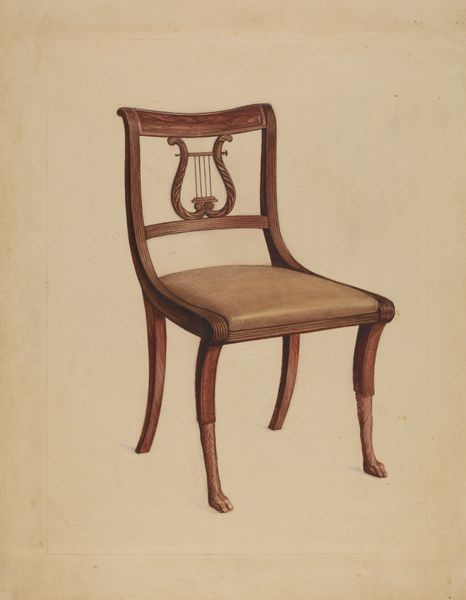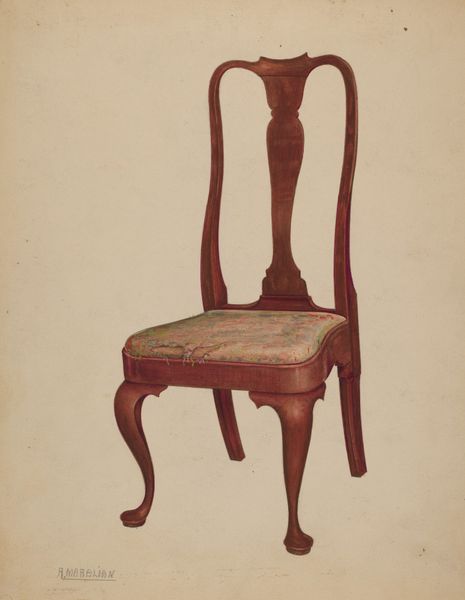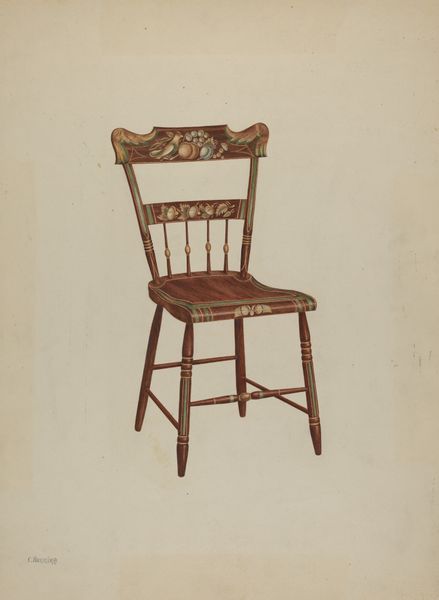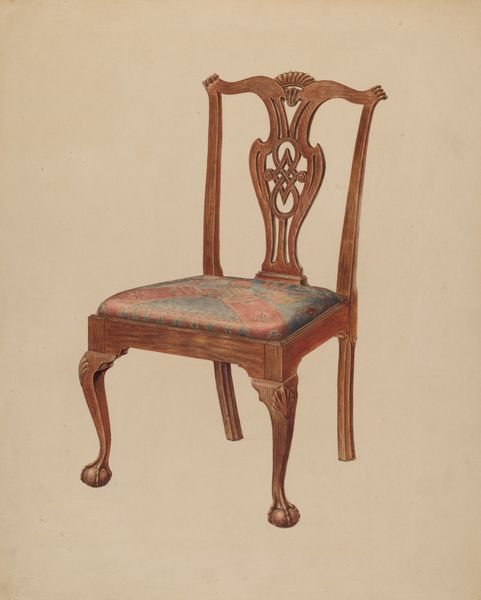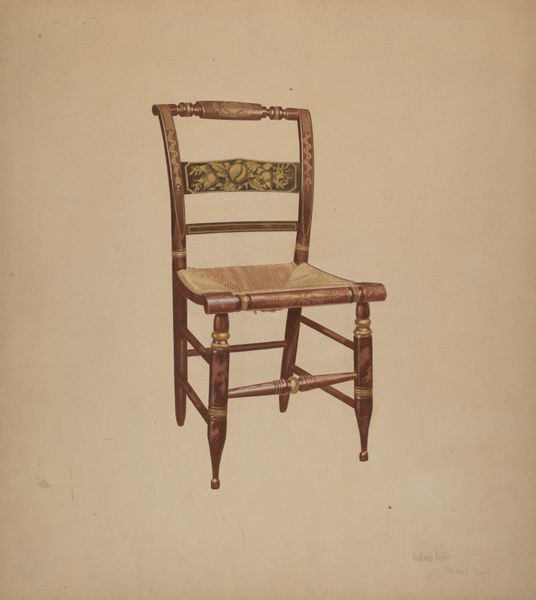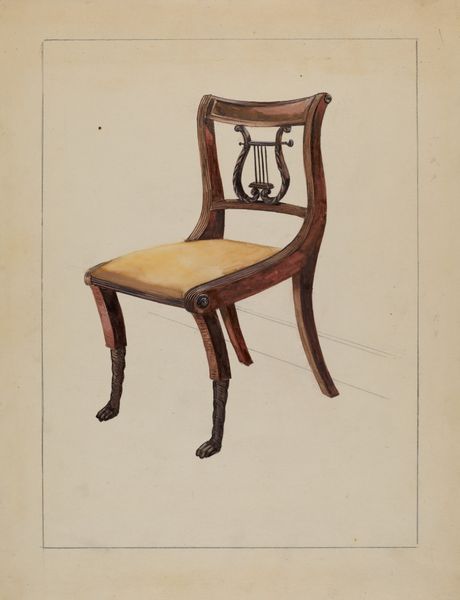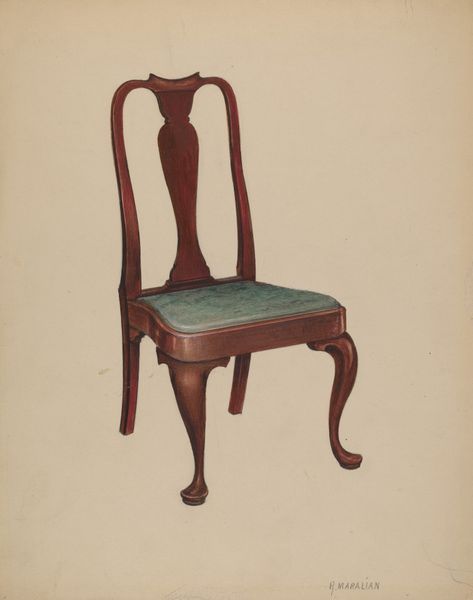
drawing, watercolor
#
portrait
#
drawing
#
watercolor
#
watercolor
#
realism
Dimensions: overall: 28.9 x 22.7 cm (11 3/8 x 8 15/16 in.) Original IAD Object: none given
Copyright: National Gallery of Art: CC0 1.0
Curator: This watercolor and drawing by Henry Granet, simply titled "Chair," made sometime between 1935 and 1942, depicts… well, a chair. Editor: Yes, but it's such a formal, even imposing, chair! Its solitary presence and the artist’s rather deliberate, frontal perspective almost turns it into a royal throne. Curator: It’s interesting that you see it that way. To me, the meticulous rendering of the wood grain and the almost reverential attention to detail give this ordinary object a distinct symbolic weight. Note the artist's focus on the interlacing curves in the chair back—shapes resembling stylized hearts, a vessel-like form. Are they markers of domesticity, the heart of the home made visible through this single object? Editor: Possibly, but I'm also curious about the artist's choice of media. The combination of watercolor and drawing lends itself to precise rendering. Looking at the work’s materiality reveals a particular class association too. Hand-crafted furniture became aspirational consumer products during that time period. It was the look of handcrafted instead of the product itself. This drawing almost immortalizes that aspirational objecthood, doesn’t it? Curator: Exactly. The symbolic is always entangled with the material. Maybe that carefully constructed surface implies ideas about stability and comfort desired, or maybe lacked, in those years. This image captures more than a piece of furniture; it’s holding a certain visual vocabulary, a code, from a period that’s imprinted on the seat cushion and carried by that wood grain. Editor: Perhaps this chair, then, isn't just for sitting. It's meant to uphold and represent a whole system of material desires. Makes you wonder about what other, often-unacknowledged desires rest there. Curator: Indeed, the silent stories within that structure. I will consider what this artwork made of watercolors and paper reveals the silent witness to everyday dramas. Editor: Right, the quiet monumentality within this very object speaks volumes! It leaves one pondering on the many, intricate stories around a singular object from the past.
Comments
No comments
Be the first to comment and join the conversation on the ultimate creative platform.
